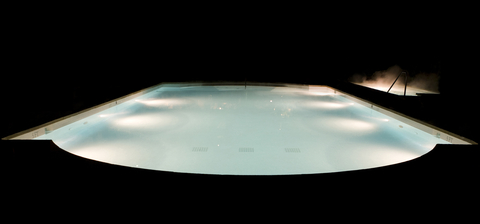Burning Sensations

If you’ve been a contractor for any length of time, it’s likely that you’ve installed more 500-watt incandescent lamps (and the niches, rings and glass lenses that enclose them) than you can easily count.
These fixtures aren’t installed as commonly as they once were, but there are a lot of them out there still – and every one of them gets hot as blazes when it’s been on for any amount of time. Even if the water is cold and is dispersing heat as efficiently as can be, the surfaces of the glass and metal components of the fixture can get wicked hot.
For the most part, this isn’t a problem: The fixtures are made for high-heat performance and will last a good long time. And people who get close enough to touch one with a hand or who accidentally back into the glass will quickly move away, well before any harm comes of it.
There’s one class of swimmers and spa users, however, who aren’t capable of responding to heat stimuli the way most of us can: These paraplegics and quadriplegics and other paralyzed persons lack the sensitivity to heat in affected parts of their bodies and therefore won’t automatically recoil from a blazing incandescent fixture.
SOUNDING AN ALARM
Through the years, I have consulted on and designed, built or remodeled a number of watershapes intended for use specifically by persons who don’t feel pain, but I know that the potential for injury that comes with hot lighting fixtures is something that seldom (if ever) enters into the picture during the design-development process.
The good news is that lighting technology has changed so much in the past 20 years – more than enough so there’s no reason for lens heat to be an issue – that the only time you’re likely to come across an incandescent bulb is in the course of replacing one with something better as part of a renovation project.
The first alternative to incandescent lighting came through about 20 years ago, and these fiberoptic lights were a good solution in cases where contact with a lighting source might be an issue. The only problem was that these units were limited with respect to lumen output: To achieve the minimum illumination required in a commercial pool or spa, for example, required large fiberoptic cables, many lighting points and a lot of costly illuminators. In many cases, additional overhead lighting was required to reach the required levels.
More recently, LED lighting has advanced to a point where it is now a superior alternative to fiberoptic systems and more than superior to incandescent bulbs. That wasn’t always true: The first-generation bubble LEDs, although heavily promoted as a gift to the global design community, never achieved the light output or enjoyed the lifespan required for commercial applications. But the latest generation of chip-driven (CREE) LEDs now rivals the output of quartz halogen lamps – with neither their heat nor their energy consumption.
TECHNOLOGY TO THE RESCUE
It’s rare that an issue of great concern is resolved, swiftly and forevermore, by the emergence of a new class of products. But it’s now safe to say that the dangers of burns from underwater pool lights can be avoided completely through the use of the newer LED lamps; not only that, but these are low-voltage fixtures, so they have benefits with respect to operating costs and electrical safety – and in many cases don’t even require bonding.
If you’re not already using these fixtures, jump out of the rut you’re in and get away from incandescent lighting as fast as you can. Your clients will appreciate it in more ways than one, and you can rest assured that nobody will ever be burned by the lighting systems in any of your pools and spas.
Safety through innovation – what a revolutionary idea!
Paolo Benedetti is principal at Aquatic Technology Pool & Spa, a design/build firm based in Morgan Hill, Calif. He may be reached at paolob@aquatictechnology.com.










